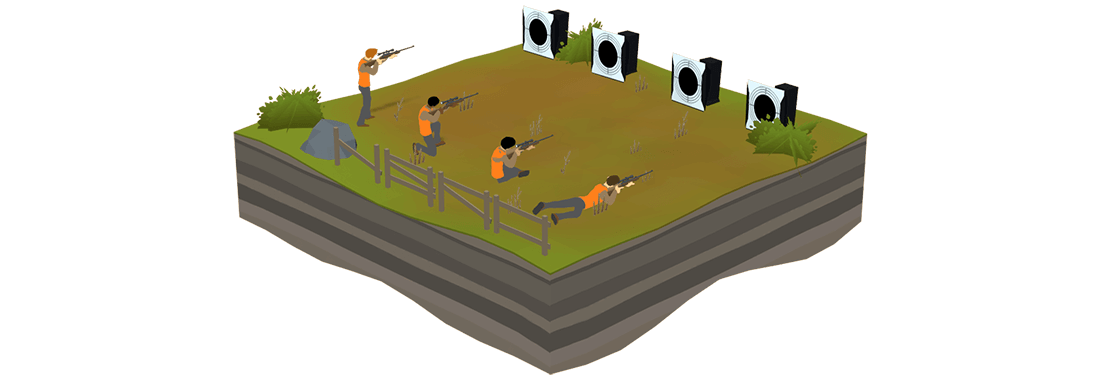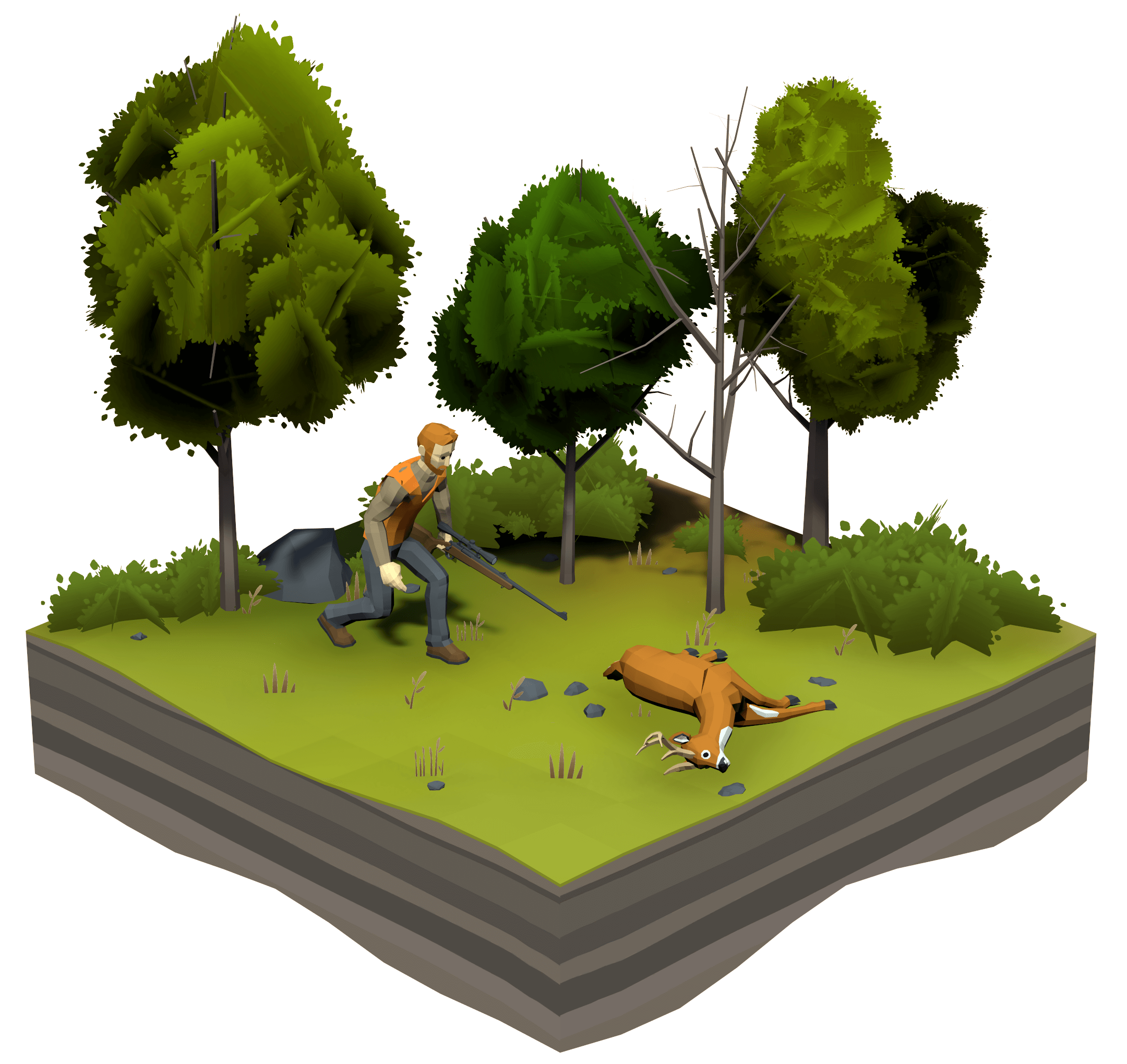Marksmanship and Hunting

Marksmanship
Marksmanship is the ability to hit your target. Every hunter should strive to become a good marksman. By building confidence in your marksmanship skills, you will enjoy safe shooting. Learning when to shoot and when to wait will lead to successful hunting.
Becoming a consistent marksman requires practice and self-discipline. As a responsible hunter, you should know your limitations and the limitations of your equipment. Your goal, when the time comes to harvest an animal, must always be a "one-shot kill." This means you must be confident your first shot will cause a quick and humane death. If this is not the case, don't shoot.
Always practice your shot before going hunting. If using a rifle a paper target will help improve your aim. If using a shotgun a clay target is recommended.
Vital Areas of Big Game Animals

A well-placed shot will strike the vital organs: heart, lungs, or liver and will kill cleanly and quickly. Hitting very specific spots on an animal, which does not have a "bull's eye" like a paper target, requires intimate knowledge of the animal's anatomy. It is important that our shot inflicts the minimal amount of suffering to the animal as possible. This is why hunters should think of the heart and lungs as the best vital areas to aim at.
The heart/lung area provides the best target because:
- They are from the largest "one-shot kill" zone
- The proper target area is easy to pick out
- A slight error in any direction will still strike a vital spot
- A heart/lung shot animal will bleed out for better meat quality
- A heart/lung shot animal will die quickly and with little suffering
- A heart/lung shot animal will leave the best trail for recovery
- There is minimal or no edible meat loss
Recovery of Big Game Animals
After taking your shot the most important thing is not to scare the animal and risk losing it. Despite our excitement to see if we got our shot right, it's important to wait between 30 minutes to an hour before trailing your game animal.
When you shoot an animal, most people expect it to fall on the spot. But this is often not the case. Most will continue to run even after being hit.
Be sure to carefully observe every movement of a game animal after you shoot it. This will help you track it once it is safe to do so.
What to do if a vitally wounded animal does not drop:
-
Mentally mark the exact location of where the animal was when you shot and where you last saw it
- While waiting, go over the shot in your mind
- What was the animal doing before you took your shot?
- What did the animal do once you took your shot and immediately after?
- Did the position of its tail or body change?
Once at the site Go SLOWLY and look for signs:
- Blood on the ground or vegetation
- Broken twigs or branches, or scattered leaves
- A “dew” line if early in the morning
- Tracks
- Hair, meat, or bone fragments
- Downhill trails, especially towards water
If you can't find blood, that doesn't always mean you missed your shot, the bleeding may be internal.
Unusual running behavior after a shot may indicate that an animal has been hit.
Use orange flags to mark the blood trail
If the blood trail fades or disappears, mark the last sign, and look through all the possible trails the animal could have taken.
Listen carefully, as you may hear the animal on the move. Also, birds such as crows will be attracted to a downed animal.
Always assume you made your shot until you recover the animal or are absolutely certain of a clean miss.
Approaching a Downed Animal

When a downed animal is found, cautiously approach the animal from above and behind the head and determine if it is still alive. Watch carefully for any rise and fall of the chest cavity. Be aware if the animal's eyes are closed. The eyes of a dead animal are normally open. If the eyes are opened and glazed over, it is safe to approach.
If the animal is still alive, it should be finished off quickly with a well-placed lethal shot. For hunters using a firearm a single shot to the base of the ear will do. If the animal is to be mounted, however, place a single shot into the heart/lung area to ensure you do not damage the cape.
For bowhunters, a single arrow into the heart/lung area is the only choice. A responsible hunter will not deliberately cause additional stress on a dying animal.
Once the animal is dispatched, follow the state’s regulations for reporting or recording a kill. You may be required to immediately sign, date, and affix a tag to the animal.
